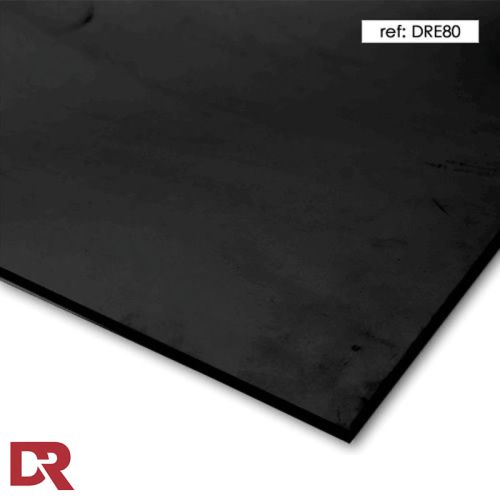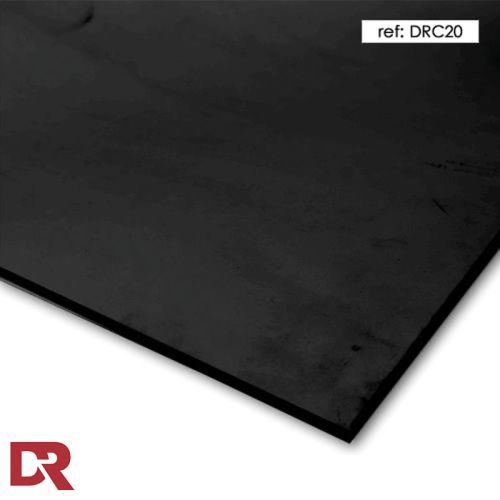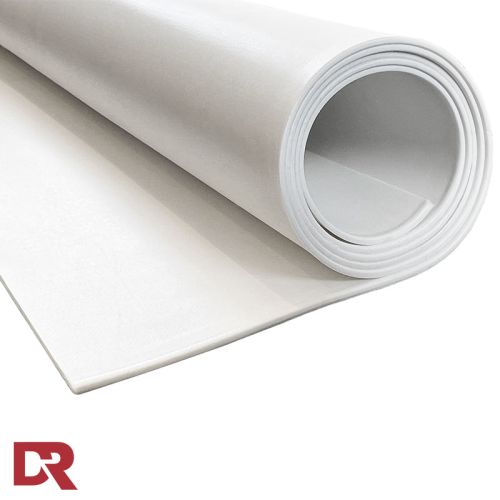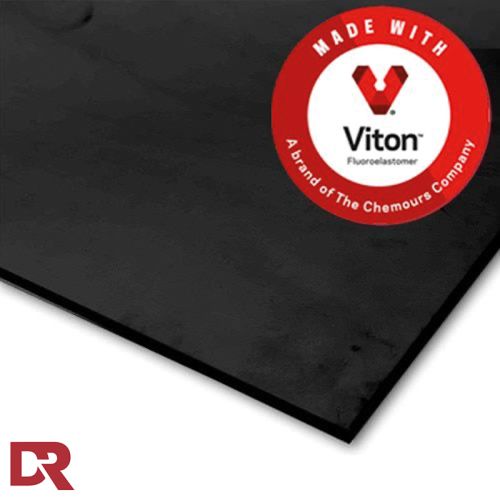Understanding EPDM properties, Neoprene properties, Silicone properties, and Viton properties is crucial when selecting the right rubber for your project. Each material offers unique benefits, and choosing the right grade is essential for optimal performance. In this blog post, we will focus on the most popular grades of these rubbers, highlighting their specific characteristics, such as durability, temperature resistance, and flexibility.
By the end of this post, you’ll have a better understanding of how these materials compare, and we’ll provide links to detailed data sheets for each material to give you further insight into their properties and applications.
What Are EPDM, Neoprene, Silicone, and Viton Rubbers?
Each of these rubber materials has distinct properties that make them suitable for different applications. Understanding the differences between EPDM properties, Neoprene properties, Silicone properties, and Viton properties is essential when selecting the right rubber for your needs.
EPDM Rubber (Ethylene Propylene Diene Monomer) is a synthetic rubber known for its excellent resistance to weathering, ozone, and UV exposure. It remains flexible in extreme temperatures and is commonly used in outdoor applications, seals, and roofing.
Neoprene Rubber is a versatile synthetic rubber with good resistance to oils, chemicals, and weathering. It provides excellent durability, making it suitable for gaskets, hoses, and industrial applications where moderate chemical and oil resistance is required.
Silicone Rubber is a high-performance material known for its flexibility, wide temperature resistance, and excellent sealing properties. It is widely used in medical, food-grade, and high-temperature applications due to its non-toxic and heat-resistant nature.
Viton Rubber is a premium fluoroelastomer rubber that offers superior resistance to fuels, chemicals, and extreme temperatures. It is commonly used in aerospace, automotive, and industrial applications where high chemical resistance and durability are required.
Each of these rubbers is available in different grades, tailored for specific uses. To better understand their key properties, continue reading for a breakdown of each material, along with links to their rubber data sheets for in-depth specifications.
EPDM Rubber Properties & EPDM Rubber Data Sheet
EPDM properties make it a highly durable and weather-resistant material, ideal for various industrial applications. It is widely used in outdoor environments due to its resistance to UV, ozone, and extreme weather conditions.

Hardness, Temperature Range, Flexibility, and Durability
- Hardness: EPDM rubber typically has a Shore A hardness ranging from 50 to 80, allowing for a balance of flexibility and strength.
- Temperature Range: It performs well in extreme temperatures, generally from -40°C to +120°C, making it suitable for both hot and cold environments.
- Flexibility: EPDM remains highly flexible even in low temperatures, which prevents cracking and degradation over time.
- Durability: Its excellent resistance to water, chemicals, and oxidation extends its lifespan in demanding applications.
EPDM Rubber Data Sheet
Our most commonly used EPDM grade, DRE80 Black EPDM Rubber, offers excellent durability, flexibility, and weather resistance. Below are the key technical properties:
- Base Polymer: Ethylene Propylene Diene Monomer (EPDM)
- Colour: Black
- Hardness: 70° ± 5° Shore A – A balanced hardness for strength and flexibility
- Specific Gravity: 1.4 g/cm³ – Ensuring a dense yet workable material
- Tensile Strength: 5.0 MPa – Provides good mechanical durability
- Elongation at Break: 300% – Allows significant stretching without tearing
- Tear Strength: 12 kN/m – Strong resistance to tearing under stress
- Compression Set (22hrs @ 70°C): 49% – Maintains sealing performance under pressure
- Abrasion Resistance: 490 – Withstands wear in demanding environments
- Temperature Range: -35°C to +120°C – Suitable for extreme weather conditions
For further details, view or download the EPDM data sheet.
Applications of EPDM Rubber
EPDM is commonly used in automotive applications, including door seals, weatherstripping, and radiator hoses due to its heat and weather resistance. In construction, it is widely used for roofing membranes and waterproofing solutions. Additionally, it is used in industrial and marine applications for gaskets, seals, and insulation materials.
Neoprene Rubber Properties & Neoprene Rubber Data Sheet
Neoprene properties make it a versatile and durable synthetic rubber, suitable for a wide range of industrial applications. It is known for its resistance to oils, chemicals, UV exposure, and weathering, making it ideal for both indoor and outdoor use.

Hardness, Temperature Range, Flexibility, and Durability
- Hardness: Neoprene rubber typically has a Shore A hardness around 65°, providing a balance between flexibility and firmness.
- Temperature Range: It operates effectively within a temperature range of -20°C to +110°C, accommodating various environmental conditions.
- Flexibility: Maintains good flexibility across its temperature range, ensuring performance without cracking or deformation.
- Durability: Exhibits strong resistance to abrasion, aging, and environmental factors, contributing to a long service life.
Neoprene Rubber Data Sheet
Our popular commercial grade, DC20 Black Neoprene Rubber, offers reliable performance across multiple applications. Key technical properties include:
- Base Polymer: Chloroprene/SBR CQ Grade
- Colour: Black
- Hardness: 65° ± 5° Shore A – Balances flexibility and firmness
- Specific Gravity: 1.4 g/cm³ – Ensures material density
- Tensile Strength: 5.0 MPa – Provides robust mechanical strength
- Elongation at Break: 300% – Allows significant stretch before breaking
- Tear Resistance: 20 kg/cm – Offers strong resistance to tearing
- Compression Set (22hrs @ 70°C): 35% – Maintains shape under prolonged compression
- Abrasion Resistance: 490 – Withstands wear in abrasive conditions
- Temperature Range: -20°C to +110°C – Suitable for diverse environments
For more detailed information, view or download the Neoprene data sheet.
Applications of Neoprene Rubber
Neoprene rubber is widely used across various industries due to its excellent resistance to oils, weathering, and heat. In automotive applications, it’s found in seals, gaskets, and hoses, ensuring durability and performance even in harsh conditions. In the construction sector, Neoprene is used for sealing joints, vibration isolation, and weatherproofing, offering long-lasting protection against the elements. It also plays a vital role in marine applications, with its ability to resist saltwater and UV exposure, making it ideal for gaskets, boat seals, and wetsuits.
Silicone Rubber Properties & Silicone Rubber Data Sheet
Silicone rubber is known for its exceptional flexibility, high temperature resistance, and electrical insulating properties, making it a go-to material for demanding applications.

Hardness, Temperature Range, Flexibility, and Durability
- Hardness: Our GP60 White Silicone has a Shore A hardness of 60° ± 5, offering a balance between strength and flexibility for a variety of applications.
- Temperature Range: With a temperature range of -60°C to +230°C, this silicone is suitable for extreme hot and cold environments, ideal for seals and gaskets exposed to fluctuating temperatures.
- Flexibility: Silicone maintains its flexibility even in low temperatures, preventing brittleness and cracking.
- Durability: It offers high resistance to oxidation, ozone, UV, and chemical degradation, ensuring a long service life in various applications.
Silicone Rubber Data Sheet
Our GP60 White Silicone rubber, a popular FDA-approved grade, is known for its excellent performance and reliability. Below are its key technical properties:
- Base Polymer: Silicone
- Colour: White
- Hardness: 60° ± 5° Shore A – Balanced hardness for flexibility and strength
- Tensile Strength: 7.9 MPa – High mechanical durability
- Elongation to Failure: 340% – Allows substantial stretching without tearing
- Tear Strength: 14.2 N/nm – Excellent resistance to tearing under stress
- Compression Set (24hrs @ 150°C): 13% – Retains its sealing capabilities under high temperatures
- Compression Set (22hrs @ 300°C): 10% – Superior performance in extremely hot conditions
For further details, view or download the full Silicone data sheet.
Applications of Silicone Rubber
Silicone rubber is widely used in the medical industry, providing biocompatibility and temperature resistance for medical devices, implants, and seals. In the automotive industry, it’s found in gaskets, seals, and hoses due to its resistance to extreme temperatures and oils. Food processing and pharmaceuticals also benefit from FDA-approved grades of silicone, ensuring safe and reliable seals in environments that require stringent hygiene standards. Additionally, silicone is ideal for electrical insulation, protecting wires, cables, and components from heat and electrical interference.
Viton Rubber Properties & Viton Rubber Data Sheet
Viton rubber, a fluoroelastomer, is renowned for its outstanding chemical resistance, heat tolerance, and durability in extreme environments, making it ideal for demanding industrial applications.

Hardness, Temperature Range, Flexibility, and Durability
- Hardness: Genuine Viton rubber typically has a Shore A hardness of 70° ± 5, offering a balanced combination of flexibility and strength for high-performance applications.
- Temperature Range: Viton excels in high-temperature environments, with a continuous temperature range of -20°C to +250°C and intermittent temperatures up to 315°C, making it suitable for extreme heat and chemical exposure.
- Flexibility: Viton maintains its flexibility under high heat and pressure, ensuring long-term performance in sealing applications.
- Durability: Known for its exceptional resistance to oils, fuels, and chemicals, Viton rubber is highly durable in harsh environments and maintains sealing effectiveness under pressure.
Viton Rubber Data Sheet
Our Genuine Viton Fluoroelastomer rubber offers superior performance in high-temperature and chemically demanding applications. Below are its key technical properties:
- Material: FKM Fluoroelastomer
- Application: High chemical, oil, and fuel resistance
- Thickness: Available in 1, 1.5, 2, 3, 4, 5, 6, 8, and 10mm
- Colour: Black
- Cloth/Plate Finish: Plate
- Density (Specific Gravity): 1.85
- Hardness: 70° ± 5° Shore A – Balanced hardness for optimal strength and flexibility
- Tensile Strength: 7 MPa – High resistance to mechanical stress
- Elongation at Break: 200% – Allows significant stretching before tearing
- Minimum Temperature: -20°C – Excellent low-temperature performance
- Maximum Temperature: +250°C continuous, 315°C intermittent – Exceptional heat resistance
- Compression Set (22hrs @ 70°C): 62% – Maintains sealing capabilities under pressure
- Tear Resistance: 20 kg/cm – Strong resistance to tearing under stress
For further details, view or download the full Viton data sheet.
Applications of Viton Rubber
Viton rubber is primarily used in the automotive industry, where its excellent resistance to oils, fuels, and high temperatures makes it perfect for gaskets, seals, and O-rings in fuel systems and engines. In the aerospace industry, it’s valued for its ability to withstand extreme temperatures and harsh chemicals, often used in seals and hoses. Chemical processing plants also rely on Viton for its superior resistance to corrosive chemicals and fuels, ensuring safe and reliable seals in demanding environments. Additionally, Viton’s heat and chemical resistance make it ideal for industrial machinery applications, including seals and gaskets in systems exposed to high pressure and temperature.
EPDM Rubber Data Sheet, Neoprene Rubber Data Sheet, Silicone Rubber Data Sheet and Viton Rubber Data Sheet
In this section, you can access detailed data sheets for the most commonly used grades of EPDM, Neoprene, Silicone, and Viton rubber materials. The data sheets will provide you with comprehensive specifications, allowing you to make well-informed decisions for your specific applications. Click on the links below to view or download the relevant data sheets.
EPDM Rubber Data Sheets
EPDM is widely used for its excellent resistance to extreme weather conditions, UV, and ozone exposure. It is a go-to material for outdoor applications where durability is key. Check out the various grades below for specific technical details about each EPDM grade.
Neoprene Rubber Data Sheets
Neoprene is known for its resilience to oils, fuels, heat, and weathering. It is commonly used for gaskets, seals, and insulation in a wide range of industries. Below are the technical specifications for the different Neoprene grades.
- DC20 Commercial Grade Neoprene Data Sheet
- Specification Neoprene BS2752 C40,C50,C60,C70 Data Sheets
- Flame Retardant Solid Neoprene SBR Rubber Data Sheet
- Neoprene Single Ply Insertion Diaphragm Data Sheet
Silicone Rubber Data Sheets
Silicone rubber offers outstanding flexibility and temperature resistance, making it a popular choice in industries like healthcare, automotive, and food processing. Here are the data sheets for our most popular grades of Silicone rubber.
- GP60 White FDA Silicone Data Sheet
- Electrically Conductive Silicone Data Sheet
- Blue Metal Detectable Silicone Data Sheet
- Flame Retardant MF775 Silicone Data Sheet
- HT800 Silicone Sponge Data Sheet
- Expanded White Silicone Sponge Data Sheet
Viton Rubber Data Sheets
Viton fluoroelastomer is highly valued for its excellent chemical resistance, particularly in high-temperature applications. It is used in critical applications like seals, gaskets, and o-rings for automotive, aerospace, and industrial environments. Below are the data sheets for the top Viton grades.
By reviewing these data sheets, you can get an in-depth understanding of each material’s properties and determine which one suits your specific needs. Simply click on the links to access the PDF data sheets for more detailed specifications.
Where to Buy EPDM Rubber Online
If you’re looking to purchase high-quality EPDM rubber online, you’re in the right place. We offer a wide range of EPDM rubber materials, available in various thicknesses, widths, and lengths to suit your specific project needs. In addition to standard rubber sheets, we also provide custom components, including gaskets, seals, and other rubber parts, available upon request. Browse our EPDM rubber options below and order with ease.
Where to Buy Neoprene Rubber Online
We provide Neoprene rubber sheets in various sizes and can also custom cut to your requirements. Custom components such as gaskets and seals are also available upon request. Check out our selection of Neoprene rubber products below for more options.
- DC20 Commercial Grade Neoprene
- Specification Neoprene BS2752 C40, C50, C60, C70
- Flame Retardant Solid Neoprene SBR Rubber
- Neoprene Single Ply Insertion Diaphragm
Where to Buy Silicone Rubber Online
We offer a variety of FDA-approved and high-performance silicone rubber grades, including sheets, rolls, and custom components. Choose the right silicone rubber for your needs from our wide selection, with the option to order custom gaskets, seals, and more. Explore our silicone rubber products below.
- GP60 White FDA Silicone
- Electrically Conductive Silicone
- Blue Metal Detectable Silicone
- Flame Retardant MF775 Silicone
- HT800 Silicone Sponge
- Expanded White Silicone Sponge
Where to Buy Viton Rubber Online
For the most demanding applications that require exceptional chemical and high-temperature resistance, Viton rubber is the ideal choice. We offer Genuine Viton Fluoroelastomer and Viton sponge rubber in various thicknesses and sizes. Custom components such as gaskets and seals can also be manufactured based on your specifications. Shop our Viton rubber products below for high-performance materials.
By visiting the links above, you can easily purchase the EPDM, Neoprene, Silicone, and Viton rubber materials that best fit your requirements. Whether you need standard sheets, custom cuts, or bespoke components, we make it easy for you to buy high-quality rubber online. If you can’t find the material you require, or are looking for custom EPDM, Neoprene, Silicone or Viton rubber components, please contact us for assistance.



